While there may be a need to ring up your family vet when you notice your dog’s nose is changing color, some dog breeds with pink noses may be as healthy as their black counterparts.
Just like humans with different genes and reactions, dogs have their peculiarities too. One such distinctive feature is the pink nose.
Dogs usually come with black or brown noses courtesy of the melanin in them, the same determinant of black skin in the human body.
However, for various reasons, some dogs can get pink noses, which indicates that the melanin is either absent or suppressed.
There are many reasons a dog’s nose can be permanently pink or change when you least expect it.
A pink nose can be genetic, as in the case of puppies or some breeds. Other factors that lead to a pink nose are the weather, allergies, age, and diseases.
In this article, we’ll take an in-depth look at some dog breeds with pink noses and what makes it happen.
While many breeds may get pink noses due to certain circumstances, these particular breeds are no stranger to lack of pigmentation, either as puppies or throughout their lives.
As we look into each breed, we’d consider common healthy factors that can make your dog have a pink nose.
If your dog is categorized under one of these classes of dogs, chances are they will have pink noses, especially as pups. So, do not panic if you observe whatever we described in this article.
Here are the Popular Dogs with Pink Noses
1. Labrador Retriever

At birth, Labradors have pink noses. It is purely a matter of genetics for this breed.
As they get older and melanin begins to take effect in their body, the nose can become brown or black.
Dudley labradors, however, keep the pink nose for the rest of their lives. The enzyme tyrosinase which is responsible for melanin does not produce as much in Dudley labradors as it does in other breeds.
This doesn’t mean Dudleys are albinos. The lack of pigmentation only reflects on their nose.
In hot weather, take measures to prevent sunburn as Dudleys are vulnerable to that.
In other Labrador breeds, age and the climate influences the level of pigmentation in their body. Don’t be surprised if your Lab’s nose changes during winter or as they become seniors.
It is normal.
The only time you should be concerned is if a young Labrador who isn’t a Dudley changes nose color on a regular day.
Related: When do Labs Stop Growing?
2. Siberian Husky
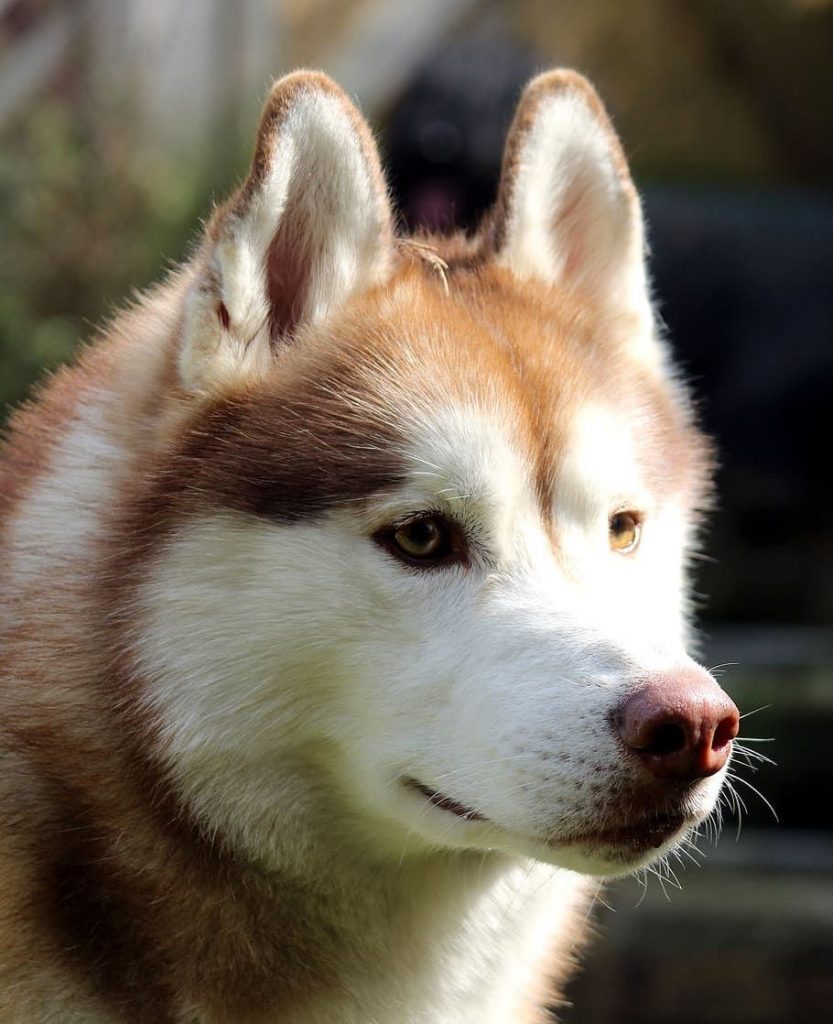
As the name implies, the Siberian Husky originates from Siberia and was used to pull sleds. With a physique similar to wolves, its fur withstands the cold.
However, we can’t say the same about its nose. The Siberian Husky’s pink nose is a direct reaction to the cold weather.
When winter comes, they get a ‘snow nose’ which makes their nose turn different colors, including pink. Age can equally affect the nose color of a Husky.
So, if you notice a pink nose on your Siberian husky during summer, take a closer look.
While a snow nose can occur during a warm climate, it doesn’t hurt to be observant. Take your dog to the vet if you notice other symptoms like bleeding and scabs.
3. Bull Terriers
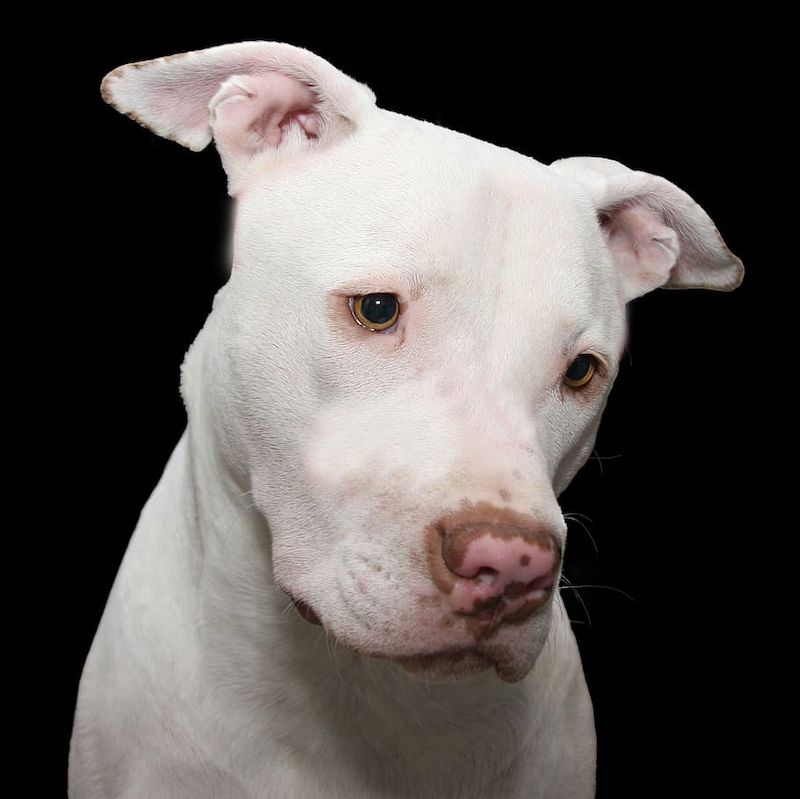
Bull Terriers are fun to be with thanks to their energy and playfulness. They are also likely to come with pink noses, either completely or in between the black color.
As puppies, they are born with white noses. This changes as they grow. The change can occur in a few weeks.
Bull Terriers get what is commonly known as ‘Dudley Nose’. It happens when a dog starts losing pigments.
4. Dalmatian
The Dalmatian is among the dog breeds with pink noses.
Made popular by the Disney animated movie One Hundred and One Dalmatians, this breed is unique for its white skin decorated with black or brown spots.
Many families choose it as a household pet and it boasts of an ability to endure, coupled with stamina.
The Dalmatians’ natural nose color is either black or brown. However, it can also turn pink by reason of age, cold, or genetics.
5. Poodle
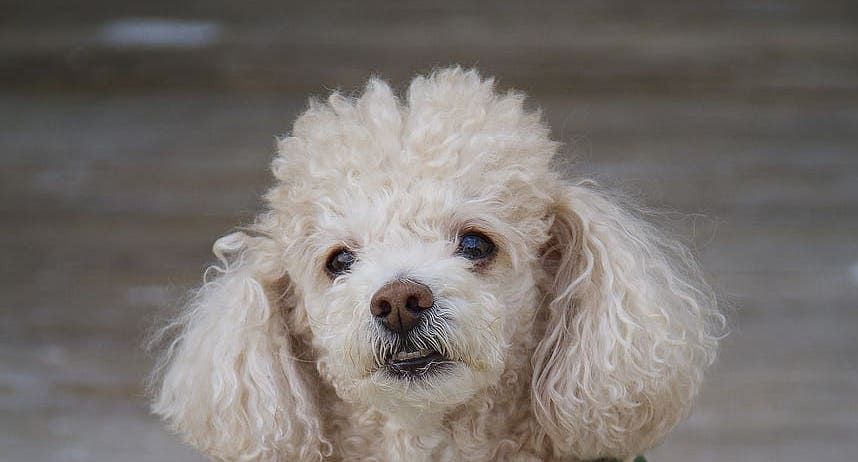
Poodles are loved for their grace, intelligence, and friendliness. Compared to other breeds, they are easily domesticated and learn fast.
Like other dog breeds mentioned, a poodle can get a pink nose. This is not universal as not all poodles have pink noses.
6. Golden Retriever
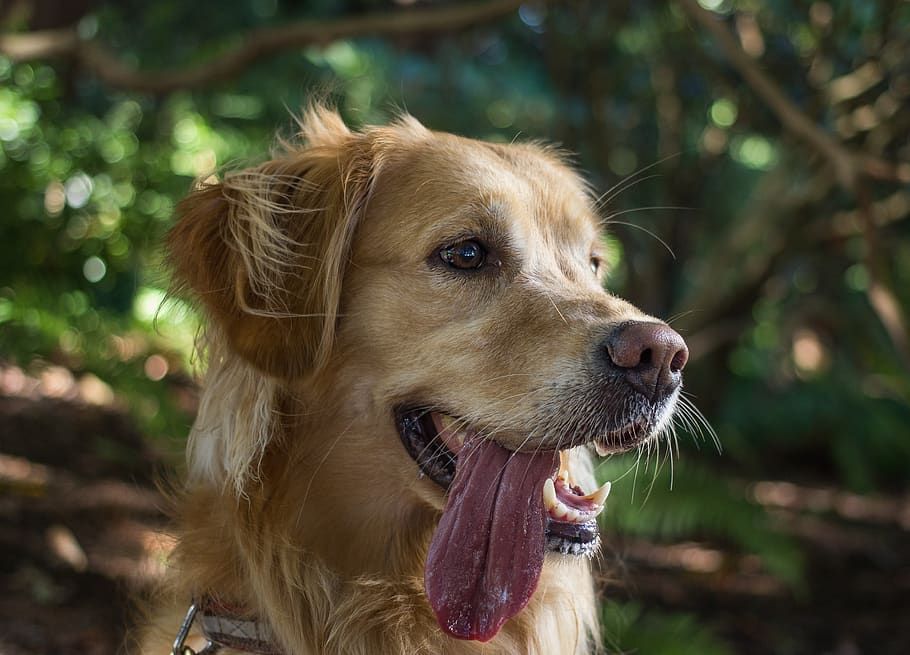
The ‘snow nose’ is common amongst Golden Retrievers, so you may detect changes in the nose color of your Retriever as the temperature drops.
This condition is also known as hypopigmentation and is not a sign of illness in your dog.
Hypopigmentation makes your Retriever’s nose take on different colors. It could be pink or a dark shade of brown.
7. Australian Shepherd
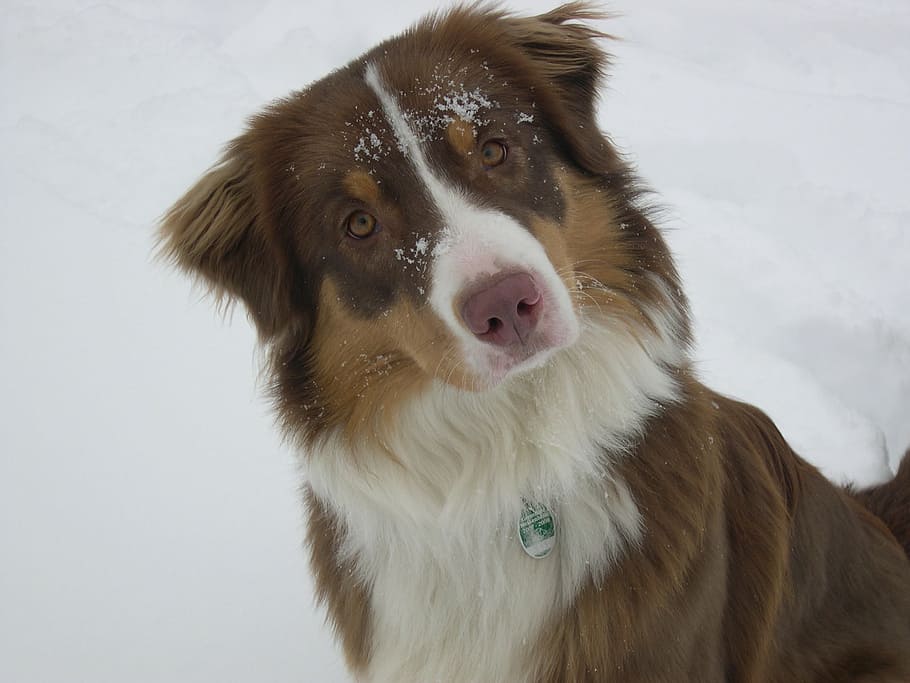
The Australian Shepherd is a popular choice for companionship because of its affectionate quality and the way they warm up to strangers.
While it is rare for an Australian Shepherd to have a complete pink nose, they get pink spots, otherwise known as ‘butterfly nose’.
However, even this shouldn’t be found on an Australian Shepherd past one year, except for factors like hypopigmentation.
8. White Boxer
The White Boxer is not a breed you should mess with as their bite is capable of holding down large prey.
They tend to be suspicious of strangers but are loyal and friendly with those they know and cherish.
At birth, Boxers have pink noses which they tend to outgrow. White boxers have less pigment than other kinds so there may be some pink left on their nose for long.
9. Beagle

Beagles started out as hunters but are pets today. Their curiosity, love, and friendliness make them good household companions.
Beagles are among the dog breeds with pink noses as puppies before pigmentation turns it black. This takes about six to nine months.
10. Dogo Argentino
A breed well known for its aggressiveness, the Dogo Argentino was made for hunting in Argentina and is a good watchdog.
Their puppies also come with no skin pigment, as other breeds we’ve mentioned.
11. Harlequin Great Danes
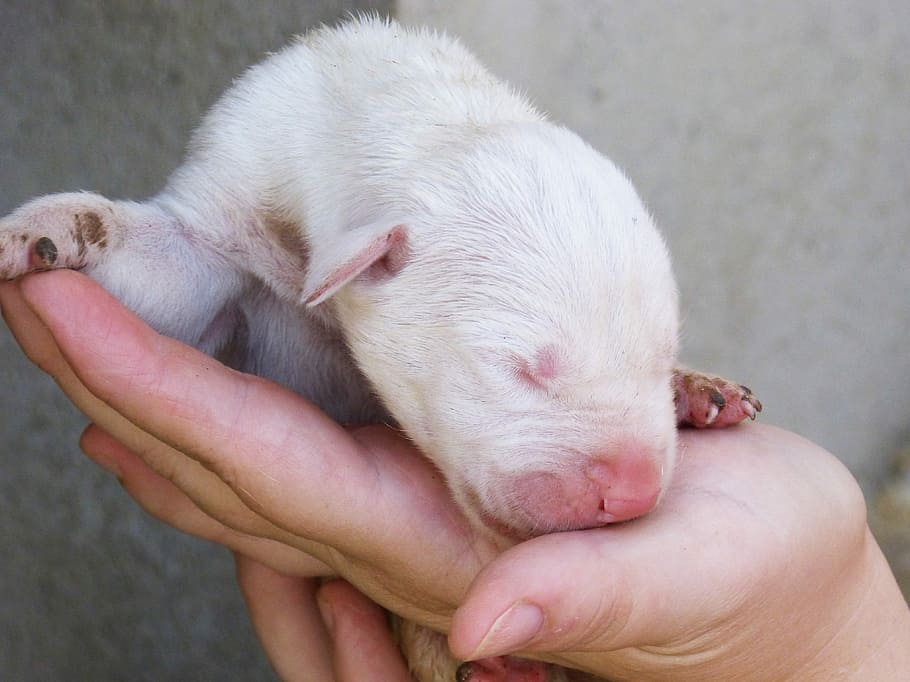
The Great Dane is considered the largest dog in the world—that would explain the name.
Seen as a gentle giant because of its low aggressiveness and ability to relate with people, the Great Dane is a wonderful companion to have.
What’s really interesting about the Great Dane is its unusual pattern of colors. The harlequin is the rarest pattern and is beautiful to see.
Baby Harlequin Danes come with pink noses. As they grow, the noses either become black or take a darker shade of pink.
12. English Springer Spaniel
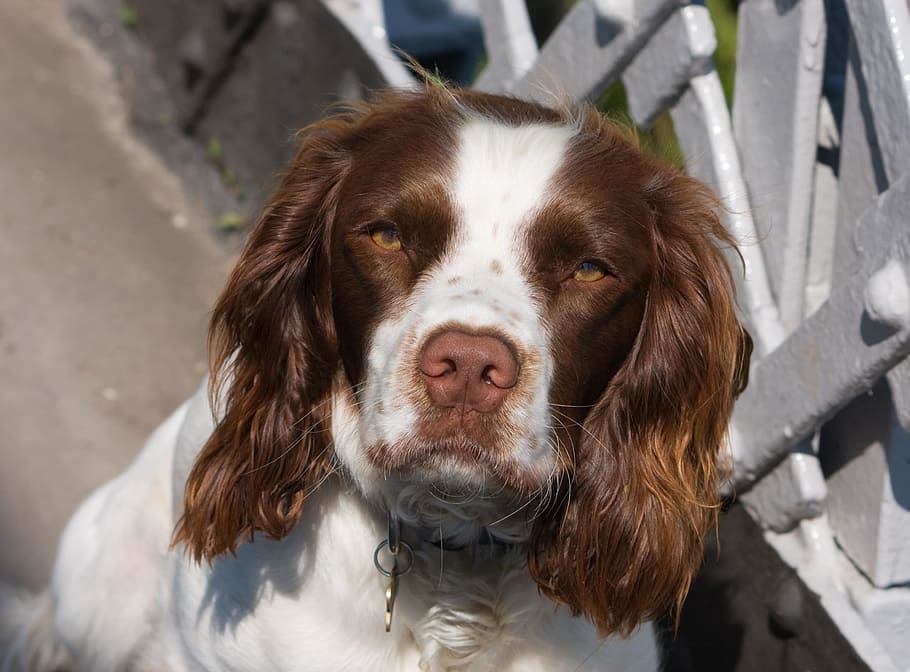
Spaniels are active, low in aggressiveness, and a good choice if you want a friendly pet to give cuddles to. They are social and good for outdoor activities.
Lack of melanin at childbirth and advancement in age are some factors that lead to a Spaniel having pink noses.
13. Bernese Mountain Dog
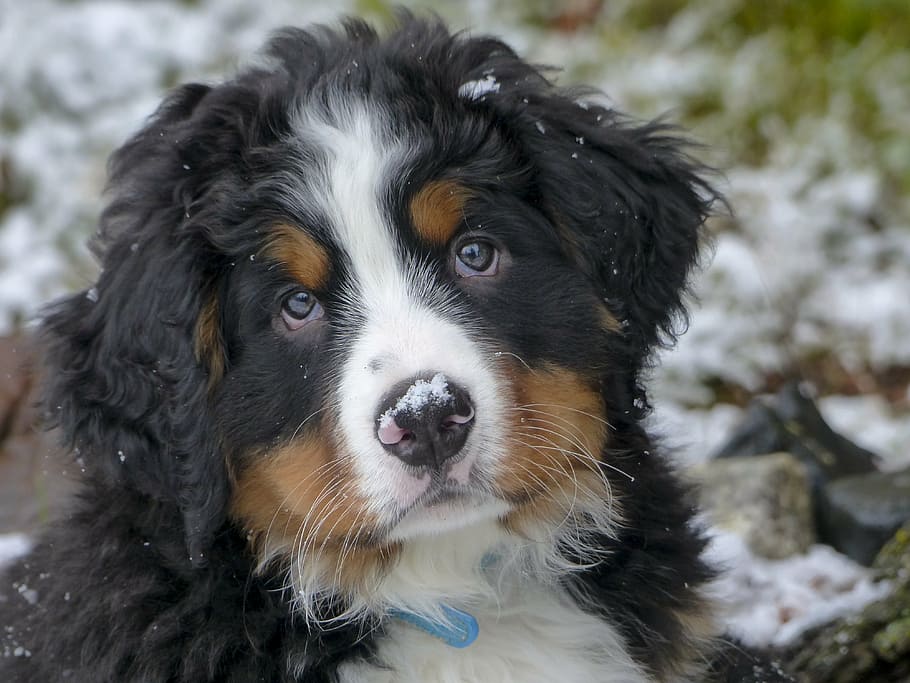
Bernese Mountain Dogs are considered kid-friendly because of their calmness, patience, tolerance of rowdy children, and eagerness to play.
They are also not aggressive, which means the chances of your Mountain Dog biting your child are low.
The babies come with pink noses. Like others on the list, they start to get the black nose as they get older.
14. Nova Scotia Duck Tolling Retriever
The Nova Scotia Duck Tolling Retriever has its roots in Canada. It easily gets motivated to do things, which is one of its good qualities.
They’re also intelligent, enthusiastic, and are good hunters.
While Nova Scotia Duck Tolling Retrievers have predominantly black noses, they can also have healthy pink noses.
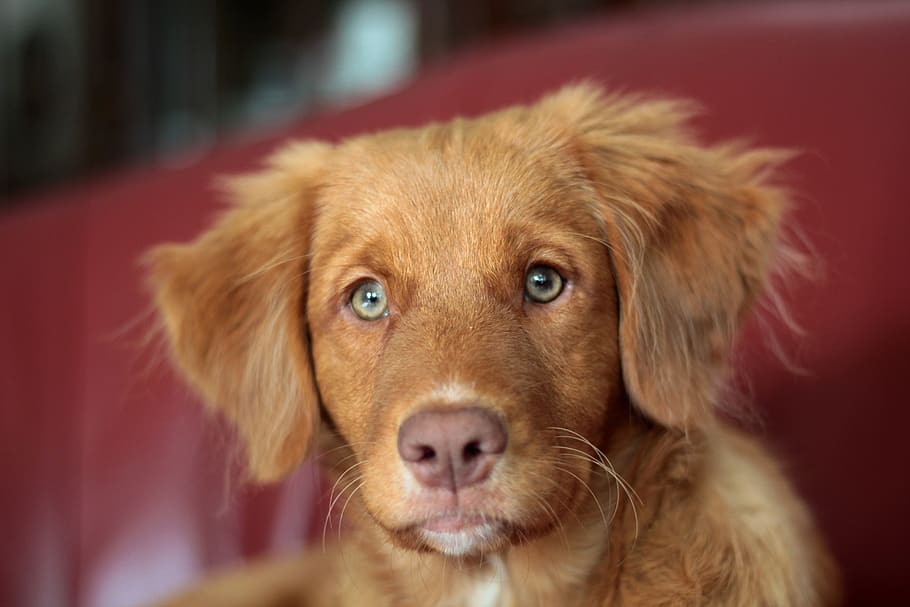
FAQs
Is a pink nose on a dog bad?
A pink nose is usually not a cause for concern as it may not indicate any illness on the animals. However, the pink nose can be bad as it can be signs of an injury, allergy, or disease. When in doubt, consult your veterinarian.
Do some dogs have pink noses?
Pink noses are common in a lot of breeds, especially newly born pups. It is not always a cause for alarm. Also, some dogs have pink noses throughout their lives.
Why is my dog’s nose pink and not black?
Many things can make a dog’s nose pink and not black, which should be the main color. The major reason is the loss of melanin responsible for pigmentation both in dogs and humans.
Final Thoughts on Dog Breeds with Pink Noses
You may have detected similarities in the causes of pink noses in each dog breed. Here’s a list of the healthy factors:
- Age
- Climate
- Genetics
Other than these, there may be moments when you should be concerned if your dog has a pink nose. It can be symptoms of:
- Cancer
- An injury
- Allergies
- Vitiligo
Keep in mind that dogs with pink noses don’t have enough melanin to guard against sunlight. Thus, they are susceptible to sunburn.
Get sunscreen meant for dogs and apply it before they hit the outdoors. Ensure that you keep the nose moisturized to avoid dryness and crusts.
Also, prioritize their health by checking to confirm that the pink nose is healthy. As we’ve said, when in doubt, get proper veterinary advice.
Other Interesting Articles:







